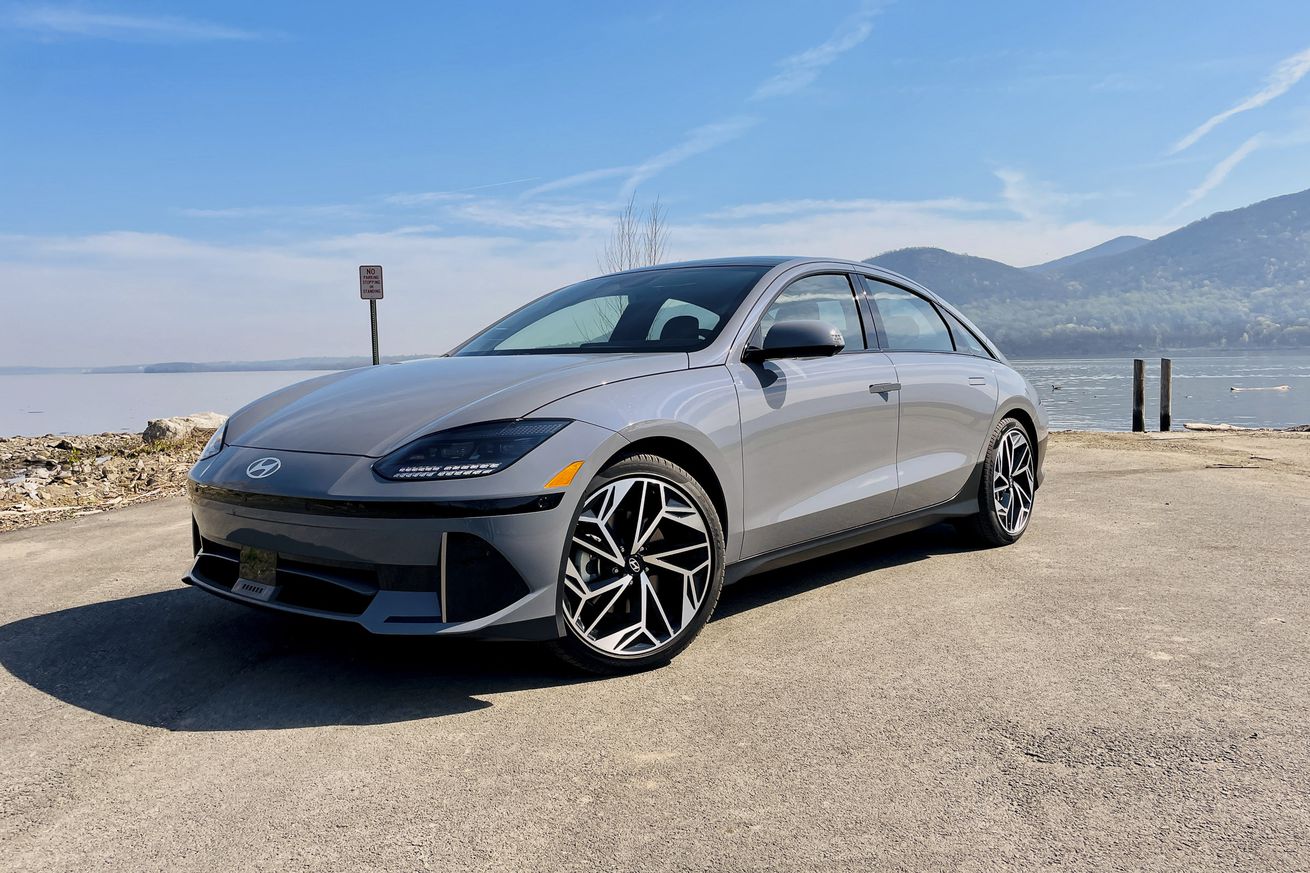
Hyundai is considering adopting Tesla’s EV plug as it readies its next-generation platform
Hyundai might soon be following Ford, GM, and Rivian’s lead in adopting Tesla’s EV charging standard in its vehicles for the North American market. But it’s got some hesitations.
During the South Korean automaker’s Investor Day on Tuesday, where it also revealed its next-generation EV platform, Hyundai president and CEO Jaehoon Chang said the decision to adopt Tesla North American Charging Standard (NACS) will come down to customer interest. But a key issue Chang mentioned, as reported by CNBC, is that Tesla’s Superchargers don’t currently offer higher charging rates supported by Hyundai’s EV platform.
Hyundai and Kia’s current EV lineup have 800-volt architectures and were designed to accept fast-charging rates up to 350kW (although current vehicles like the Hyundai Ioniq 5 and Kia EV6 can’t actually charge that fast). Tesla’s vehicle architectures, in comparison, run at 400V or lower and can fast-charge at a maximum rate of 250kW. Chang said his company will reach out to Tesla to see if the NACS charging system can be altered to support Hyundai’s faster charging systems.
Meanwhile, Hyundai’s working on its next-generation platform, called Integrated Modular Architecture (IMA), which will underpin 13 new vehicles, including Kia and Genesis brands. IMA will completely replace E-GMP and will come with design efficiencies that allow more flexible use of parts that go into vehicles of all sizes: from small sedans to really big SUVs.
IMA will also come with new software, which according to Hyundai, will be an “open operating system” on which the automaker will build an “app ecosystem.” And it’ll also zip in controller integration for future Level 3 autonomous driving tech. Hyundai notes the system will include advancements to support powerful semiconductors and better over-the-air software update implementation.
In terms of battery tech, IMA will be flexible in supporting different cells and chemistries, including nickel-cobalt-magnesium and lithium-ion phosphate batteries. Another interesting idea of Hyundai’s is a separate battery bank that could charge EVs while driving.
Hyundai says it plans to sell 2 million EVs by 2030. Getting to that number will require continuing to push its current lineup of vehicles that run on the outgoing platform. And as it starts making new vehicles built on IMA, including a possible pickup truck, Hyundai will need to decide soon if Tesla NACS will be included.
Major automakers, including Ford, GM, and Rivian, have agreed to deploy Tesla NACS adapters so customers can use the company’s Supercharger network starting next year. Hyundai’s EGM-P can accept 400-volt charging in addition to 800 volts, so an adapter could be possible if the automaker works it out with Tesla. If not, Tesla is still adding CCS Magic Docks to select Supercharger stations to support other EVs.
Whatever Hyundai decides on Tesla’s charging standard likely wouldn’t be ready in time for the launch of an apparent camouflaged Ioniq 7 SUV, which was spotted in spy shots in Germany by Motor1. The vehicle seems like it could be the production version of the Hyundai Seven concept and based on Kia’s three-row EV9 SUV.
Since Tesla has to support CCS in Europe, Hyundai won’t need to worry about NACS in that region. But if the camouflaged Hyundai appears in the US, someone should definitely follow it and see if it stops at a Supercharger.

